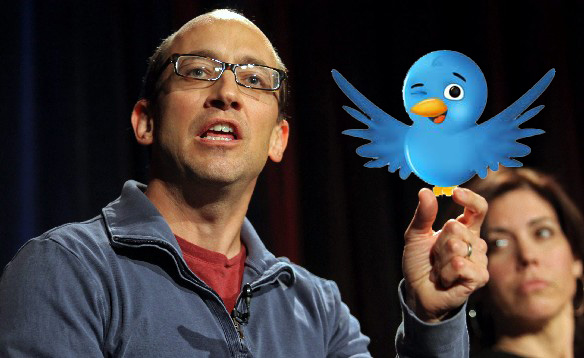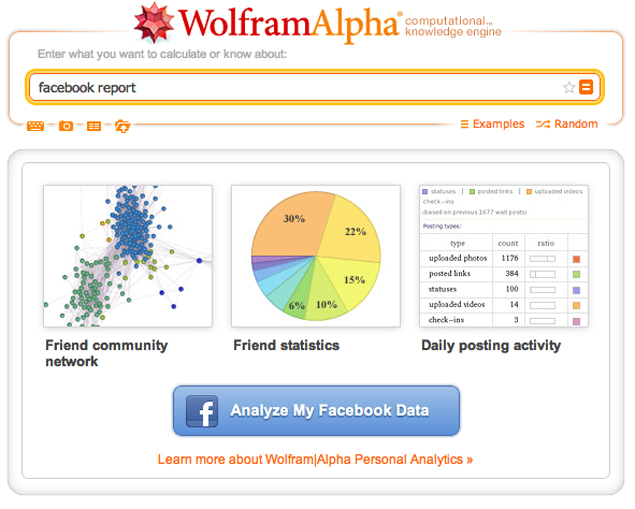 2012 was a big year for Twitter. The microblogging and social
messaging site cemented its position as the second most popular social
media site by reaching 200 million monthly active users in mid-December.
2012 was a big year for Twitter. The microblogging and social
messaging site cemented its position as the second most popular social
media site by reaching 200 million monthly active users in mid-December.
2012 was also the year of many Twitter firsts: new Tweeters, records broken and improvements to an already popular service.
Here is a list of some of Twitter’s highlights from 2012:
The Top Tweet
Barack Obama @BarackObama - “Four more years”
After being elected for a second term as US President, Barack Obama
tweeted an emotional photo of a shared embrace with wife Michelle,
accompanied by the message “Four more years”.
The Tweet, which was posted on 6th November, was retweeted over 800,000
times and favourited over 300,000 times, becoming the most popular Tweet
of 2012 in a matter of hours.
 Hot Topics
London 2012 Summer Olympics
Hot Topics
London 2012 Summer Olympics
Over the two week long event, 150 million Tweets were sent regarding the
Olympics. The closing ceremony saw the largest spike, with over 116,000
Tweets being sent a minute.
A celebratory Tweet by Team GB (
@TeamGB) was one of the most popular Tweets of the year, amassing over 67,000 retweets and 5,000 favourites.
 The US Election
The US Election
More than 31 million relevant Tweets were sent on the day of the
election. As the votes were counted that evening, the conversation on
Twitter reached an impressive 327,452 Tweets per minute.
New Faces
The Pope @Pontifex
Pope Benedict XVI has amassed almost 2.4 million followers across his 8 multilingual accounts since joining Twitter last month.
The English version of
his first tweet, which thanked Twitter users for their “generous response”, was retweeted over 64,000 times.
David Cameron @David_Cameron
English Prime Minister David Cameron joined Twitter in early October
after previously making derogatory statements about those who post ‘too
many tweets’, statements for which he has since apologised.
David Cameron’s first tweet was not greeted with much enthusiasm by the
public, but in the few months he has been active Cameron has managed to
amass over 200,000 followers.
 Pelé @Pele
Pelé @Pele
Brazilian football legend Edison Arantes do Nascimento, known to the
world as Pelé, set up a Twitter account on 9th April. The man, who some
say is the greatest footballer ever, has over 388,000 followers, and
posts regularly in both English and his native Portuguese.
Twitter Firsts
The Deepest Tweet
Blockbuster Hollywood director James Cameron (
@JimCameron)
sent the deepest ever tweet from his DEEPSEA CHALLENGER submersible,
35,775 feet beneath the Pacific Ocean’s surface in the Mariana Trench.
“Just arrived at the ocean's deepest pt. Hitting bottom never felt so good. Can't wait to share what I'm seeing w/ you
@DeepChallenge”, tweeted Cameron.
 The Twitter Literature Festival
The Twitter Literature Festival
In late November and early December, Twitter held the first ever Twitter
Fiction Festival, challenging writers to compose a narrative using the
140-character limit.
29 different projects were chosen to be featured throughout the
festival, with ideas as diverse as a romance between a girl and a
sasquatch and a challenge to users to write Twitter epitaphs.
Anyone could get involved in the festival by using the hashtag
#twitterfiction.
Twitterrific!
Speak2Tweet
During the Syrian uprising, Twitter revived the Speak2Tweet initiative.
The service provided Syrians whose internet and electricity had been cut
with a hotline which, when called, posted Tweets on their behalf.
Hurricane Sandy
During Hurricane Sandy, Twitter offered free promoted Tweets to a number
of charities and relief organisations on the East Coast of America.
People were able to use Twitter to follow the progress of the storm and access vital information about staying safe.
The service proved invaluable, especially as Twitter had resurrected
their SMS service to provide coverage in areas where the internet was
down.
 Baby Hashtag
Baby Hashtag
On Saturday 24th November, baby Hashtag Jameson was born. Following in
the footsteps of baby Facebook and baby Like, baby Hashtag’s parents
decided on a name for their daughter that they could be certain no other
child would have.
New Features
Twitter Photo Filters
In early December, Twitter and photo sharing service Instagram had a
very public falling out. Instagram stopped supporting Twitter Cards,
which meant that photos posted from Instagram onto Twitter stopped
showing up properly.
Twitter acted quickly, bringing out their own Aviary-supported photo
filter service. Although not as comprehensive as its Instagram
counterpart, Twitter photo filters impressed users with its ease of use
and intuitiveness.
Header Images
Twitter introduced Header Images in September, giving creative Tweeters a chance to express themselves.
Ryan Seacrest’s profile page was perhaps the most lauded: showing him embracing the American Idol judges.
 Tailored Suggestions
Tailored Suggestions
The “Who To Follow” sidebar uses data gathered from users’ browsing
history and integrated websites to suggest who they should follow next.
Despite early concerns that the feature would be too invasive, it
proved to be a vast improvement on the previous system, which just
suggested people similar to the user.
Downloadable Tweets
Dick Costolo promised, and delivered, downloadable tweets in December, after many users had asked for the service.
Costolo promised the service would be up and running in time for
Christmas, despite evoking the ire of his engineers, who felt that they
would need more time to develop the system.
The engineers managed to develop the feature, despite the time constraint, allowing Costolo to keep his word.
 Negative Keyword Targeting and Trend Matching
Negative Keyword Targeting and Trend Matching
Twitter updated their promoted Tweets service for businesses last
month, allowing companies to disassociate themselves from potentially
damaging words or phrases.
With the update, the search engine matches companies to specific trends relevant to their service or produce.
What was the highlight of your year on Twitter?

 The most recent hastag and the most recent mention are listed beneath, constantly changing as more and more tweets are posted.
The most recent hastag and the most recent mention are listed beneath, constantly changing as more and more tweets are posted.








 Comments such as ‘xxx’ will be flagged up, with users of the app also able to search for specific content or words that they feel may offend someone. This content can then be deleted should they wish to do so.
Comments such as ‘xxx’ will be flagged up, with users of the app also able to search for specific content or words that they feel may offend someone. This content can then be deleted should they wish to do so.















